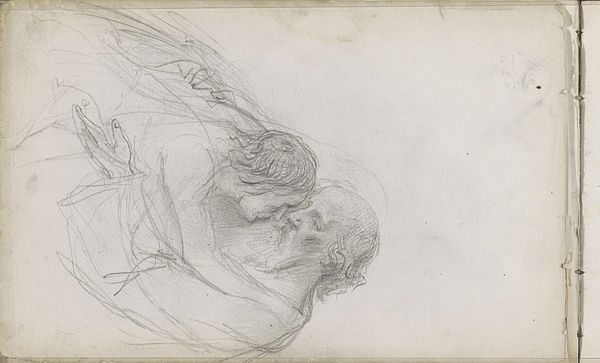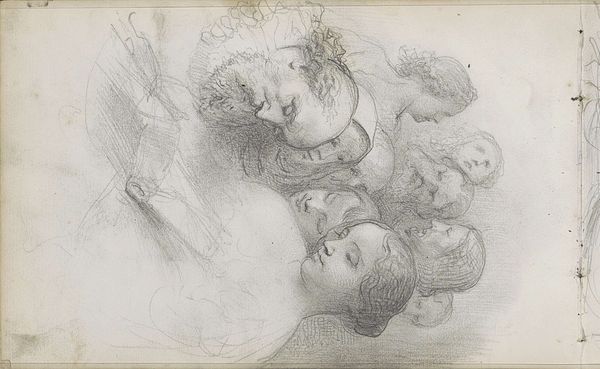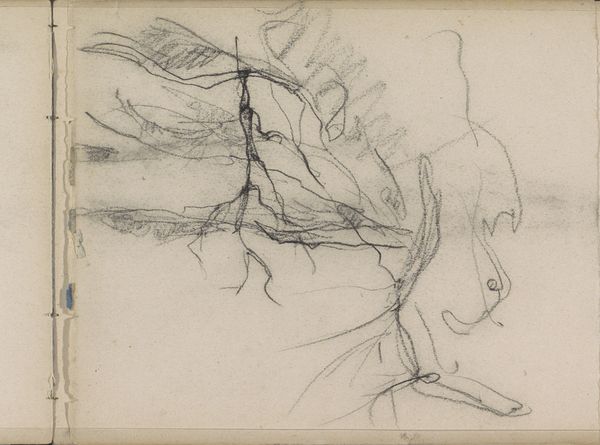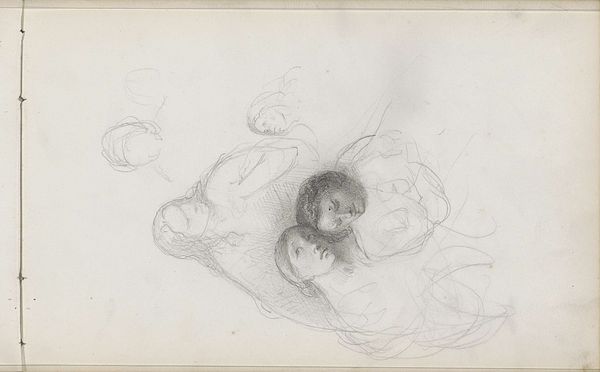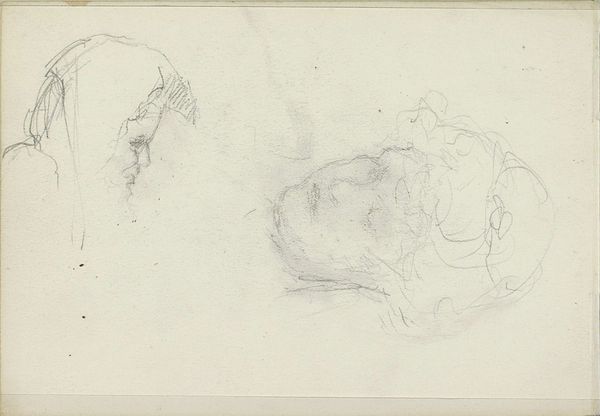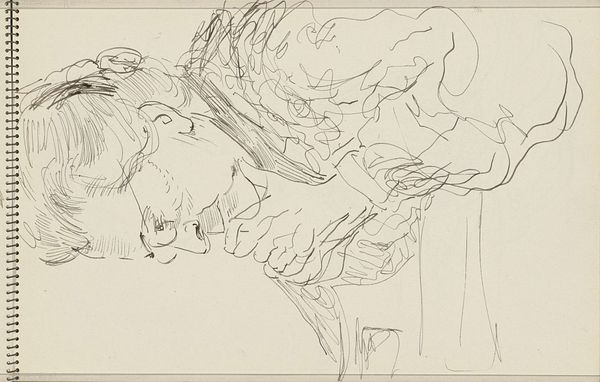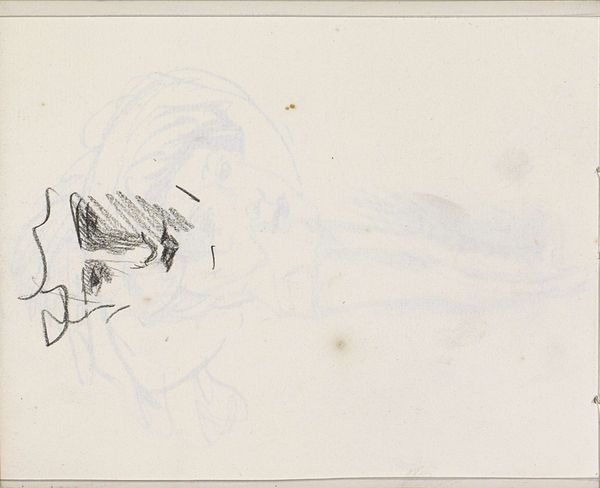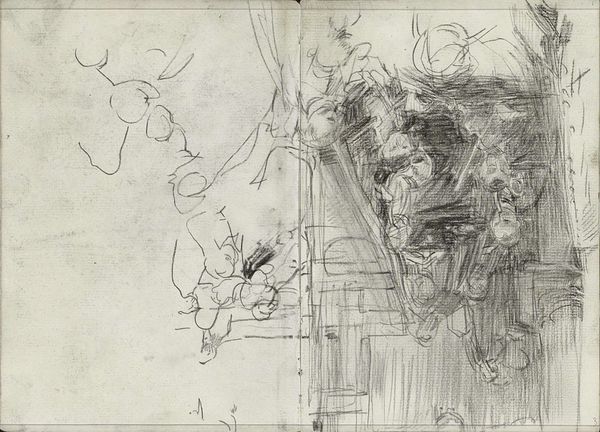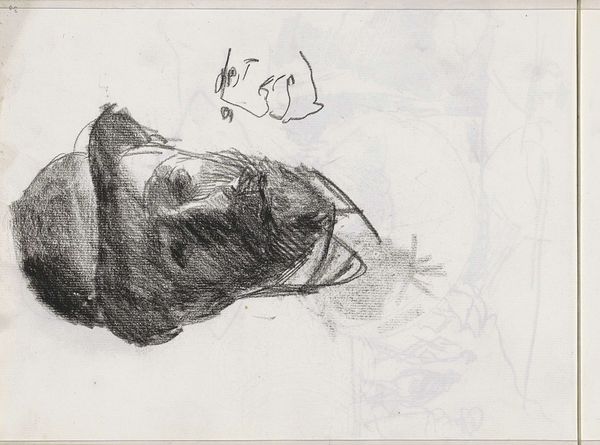
drawing, paper, pencil
#
portrait
#
drawing
#
paper
#
pencil
#
academic-art
#
realism
Copyright: Rijks Museum: Open Domain
Curator: Here we have Bastiaan de Poorter's drawing from around 1858, "Girl with an Object in Her Hands." It’s done in pencil on paper and resides here at the Rijksmuseum. Editor: My first impression is one of softness, of something unfinished, maybe even fleeting. The figures almost seem to float on the page, especially the fainter one on the left. Curator: It's interesting to consider de Poorter's place in the 19th-century Dutch art world. Academic art prized skill, but the act of sketching like this hints at the artistic process, it demystifies the creation itself, it becomes about the hand and the materials used. Editor: Yes, the contrast is immediately evident. The density of the shading on the right figure gives it such presence. I see the clear articulation of form through the use of light and shadow—classic stuff, yet with a clear immediacy of capturing a fleeting moment. Curator: What's the object in her hands? Is it merely an incidental prop, or could it hint at something about the girl's place or purpose? Was this practice for a larger painting, or study for academic work? These are questions that highlight how art serves particular social functions, even at the level of early sketch. Editor: While those contextual aspects are crucial, it’s the pure visual quality of line, form, and tonality that really grips me here. De Poorter coaxes three dimensions out of two with the humblest materials! Curator: But that very humility suggests accessibility, even social commentary by subverting the then prevalent view of high art being about precious material. A student or any artist had a chance if they embraced skill and observation. Editor: Indeed! Thank you for enriching my view on this with these relevant material and social details. Curator: And thank you, for reminding us that such social meanings would never come across if not for the way the picture is created!
Comments
No comments
Be the first to comment and join the conversation on the ultimate creative platform.
